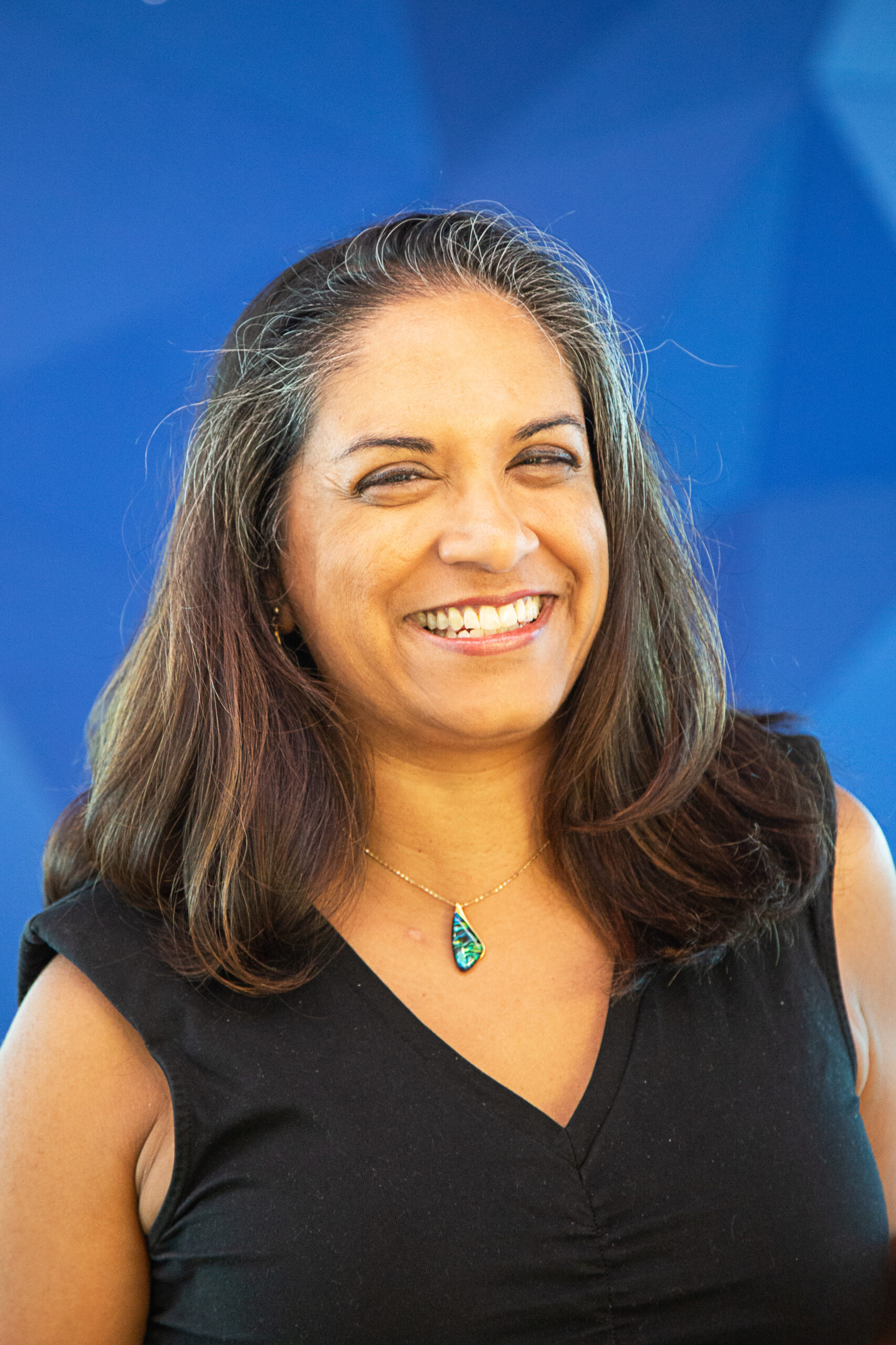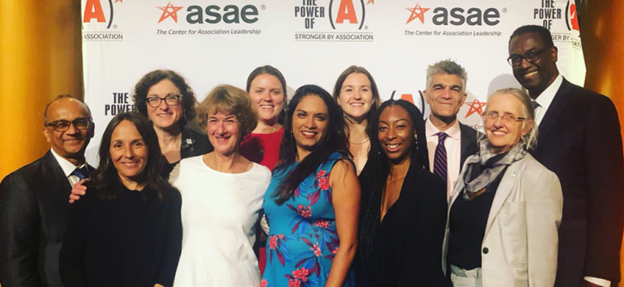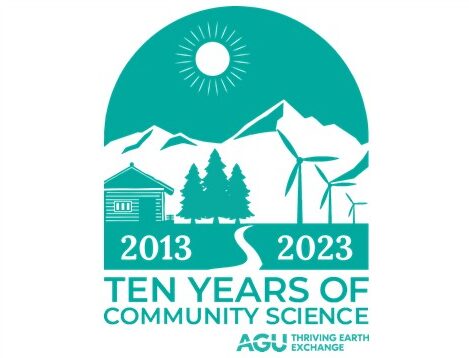Thriving Earth Exchange at 10 Years:
A Q&A with Thriving Earth Director Natasha Udu-gama
2023 marks 10 years since the founding of Thriving Earth Exchange. It’s a milestone worth celebrating! It’s also a great time to step back and take stock of where we’ve been and where we’re going. To reminisce and reflect, we recently sat down with Natasha Udu-gama, who has been with the Thriving Earth team since 2014 and stepped into the role of Director in 2022.
What drew you to Thriving Earth Exchange initially?
NU: When I came to AGU for an interview, I remember not really knowing what this Thriving Earth Exchange thing was. The program started operationally back in 2013, so it really hadn’t developed any sort of reputation at that time. But talking to [Thriving Earth Founding Director] Raj Pandya, I was struck by his manner – his humility, our shared passion for communities first, and, ultimately, his vision for Thriving Earth Exchange.
What essentially drew me in was the notion of working community first. I had done a lot of research and work with communities, especially related to early warning systems in South and Southeast Asia. I thought this could be an opportunity for AGU to bring Earth and space science to communities in a truly authentic way. The other thing that drew me in was that AGU is an organization with members in 147 countries—I was struck by the possibility of a program like this being successful and then potentially going global.

Natasha Udu-gama, Director
What were the early years like?
NU: When I joined, there were only five projects, and they all started because of personal connections. Initially, we didn’t have a way to let communities know we existed. We did a lot of brainstorming in those days – trying and testing different approaches. I did wonder how we were going to achieve our goal of working with 100 communities affecting 10 million people by 2019. It was a mad dash, and we exceeded that goal, but I did worry at the time about how our very small team would be able to do it.
I also remember a lot of communities being very dubious about why AGU wanted to work with them and what was really in it for scientists. Because we didn’t have the track record that we do now, it took a long time to convince communities that we were in it for their interests, and not our interests.
How has the organization evolved since then? What’s the same and what’s different?
NU: Initially, we didn’t have the Scope – Match – Solve – Share approach. We were just trying to figure out how we could do community-first work, what it would take, and who would be willing to work with us. We tried several models that didn’t pan out, but we learned from them. What enabled us to ultimately be successful was AGU’s commitment to us even through those failures. We were able to try different things and see what worked and what didn’t, and that helped us get to the community science approach that we have today.
The element that’s been consistent throughout is AGU’s staunch commitment to community science. When I came on board, I thought it was pretty amazing that a scientific society at that time was considering deeply their benefit to society without it being about simply promulgating the science they were doing. By 2020, AGU’s strategy evolved to explicitly emphasize the importance of solutions science. It felt like all the work that we’d done through Thriving Earth along with other AGU programs up to 2019 had really impacted AGU’s thinking around solutions science. The AGU Board and many more members understood the potential impact that encompassing community science would have for the organization and the science.

Members of the Thriving Earth team at the ceremony for the American Society of Association Executives Power of A Summit Award, which Thriving Earth Exchange received in 2019. Back row, left to right: Chris McEntee, former AGU CEO; Sarah Petersen and Melissa Goodwin, former Thriving Earth team members; Raj Pandya, AGU Vice President for Community Science and former Thriving Earth director; Billy Williams, AGU Senior Vice President for Ethics, Diversity and Inclusion. Front row, left to right: Mahmud Faroque, former Thriving Earth advisory board member; Jenny Riker, Thriving Earth advisory board member; Carol Finn, former chair of the Thriving Earth advisory board and former AGU President; Natasha Udu-gama, Thriving Earth director; Julia Jeanty, the first Thriving Earth Community Science Fellow; Robin Bell, former AGU President.
What do you see as the organization’s major successes, and who has contributed to that success?
NU: I’m most proud of Thriving Earth maintaining our commitment to being truly community first. A lot of organizations say they are community led or inspired or engaged, but to be truly community first and really stick to that throughout the years is both personally and professionally meaningful.
Over the past 10 years there has really been this moment—and it’s not just Thriving Earth Exchange—with climate change and all of the issues happening in our world, there’s this realization that we can’t do anything alone. I think the scientific enterprise has realized that we need to listen, to include and understand community context and community knowledge. Thriving Earth came at a time that was ripe for doing this kind of work. And now, the White House has reached out to us many times, we’ve been involved in more and more national-level activities, we’ve had a community science themed session at COP27 and we’ll have another at COP28, and AGU has activities around the sciences’ benefit to humanity as a core part of its mission.
Many, many people were instrumental in this journey. [Former AGU CEO] Chris McEntee was critical for having the vision to seed and start this program, and to hire Raj, who really embodied the idea of community science. Billy Williams and Brooks Hanson have been so influential in investing in our growth along the way. We are also grateful to our community-serving organizational partners, who took the time to listen to what we hoped to do, and believed in the idea of community science and in us as people. And, critically, we would not be where we are today if not for all the communities, fellows, and scientists who work to serve community priorities by so generously giving us their trust, time and efforts.
What do you hope the organization’s future will hold?
NU: With the growth of our new community science hubs around the country, I’m excited about the prospect of having tailored support for communities that we haven’t been able to support in ways that would best include and serve them. Each of those hubs will have opportunities to adapt community science to those engagements and to be leaders in the field. I also anticipate there being a similar model for seeding and growing similar hubs globally.
One of the things that Raj said to me and the team many years ago is that it would be amazing if we got to the point where we put ourselves out of business—meaning that this becomes part and parcel of how science is done, that communities have the capacity and tools to work equitably with scientists on their priorities and scientists know what community science is and teach their students about it so as to encourage community-inspired research. I don’t think that is in the immediate future, but I am an eternal optimist. I feel very hopeful, and I know that there are a lot of very exciting opportunities for community science on the horizon.

